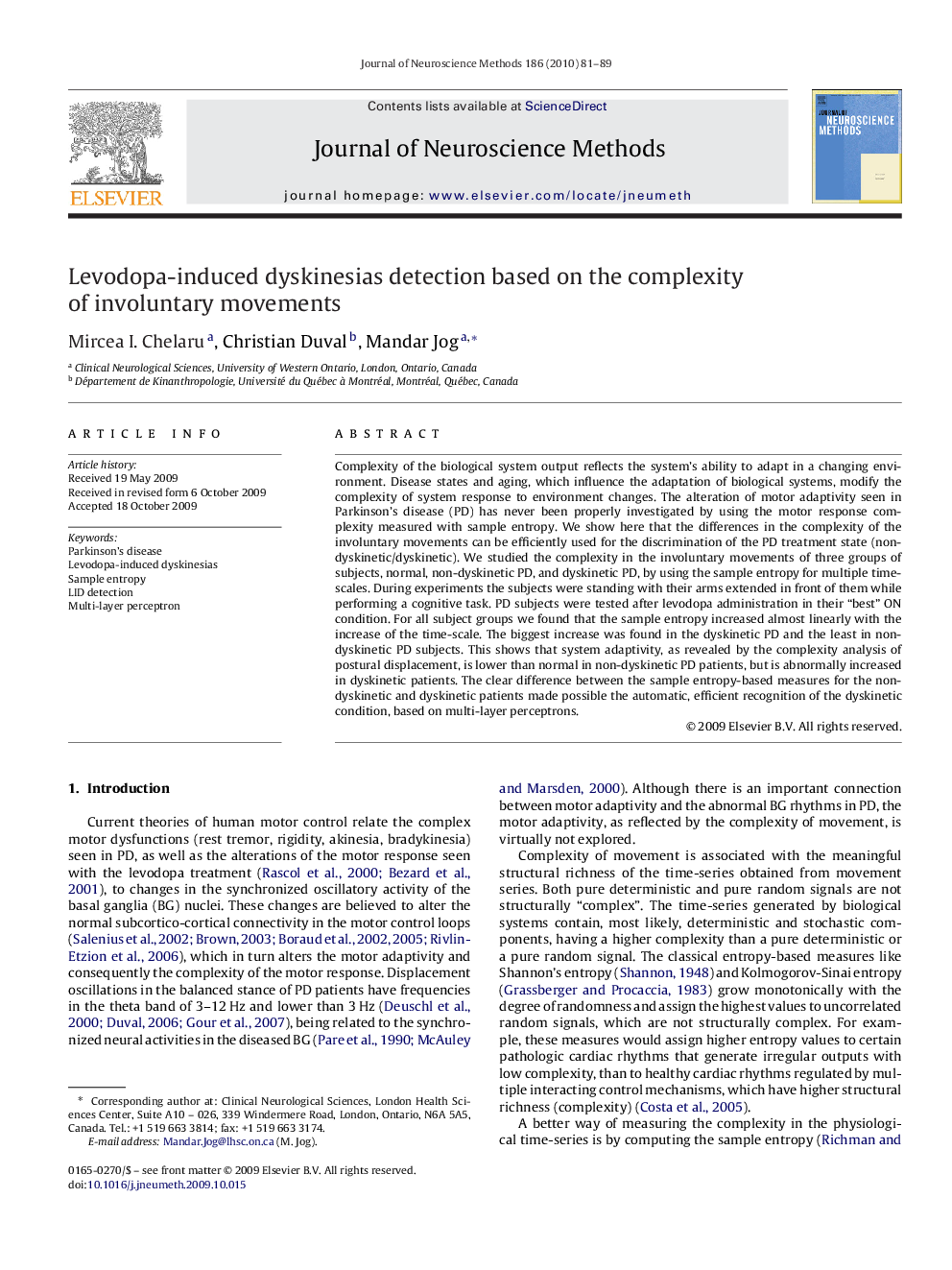| Article ID | Journal | Published Year | Pages | File Type |
|---|---|---|---|---|
| 4335647 | Journal of Neuroscience Methods | 2010 | 9 Pages |
Complexity of the biological system output reflects the system's ability to adapt in a changing environment. Disease states and aging, which influence the adaptation of biological systems, modify the complexity of system response to environment changes. The alteration of motor adaptivity seen in Parkinson's disease (PD) has never been properly investigated by using the motor response complexity measured with sample entropy. We show here that the differences in the complexity of the involuntary movements can be efficiently used for the discrimination of the PD treatment state (non-dyskinetic/dyskinetic). We studied the complexity in the involuntary movements of three groups of subjects, normal, non-dyskinetic PD, and dyskinetic PD, by using the sample entropy for multiple time-scales. During experiments the subjects were standing with their arms extended in front of them while performing a cognitive task. PD subjects were tested after levodopa administration in their “best” ON condition. For all subject groups we found that the sample entropy increased almost linearly with the increase of the time-scale. The biggest increase was found in the dyskinetic PD and the least in non-dyskinetic PD subjects. This shows that system adaptivity, as revealed by the complexity analysis of postural displacement, is lower than normal in non-dyskinetic PD patients, but is abnormally increased in dyskinetic patients. The clear difference between the sample entropy-based measures for the non-dyskinetic and dyskinetic patients made possible the automatic, efficient recognition of the dyskinetic condition, based on multi-layer perceptrons.
